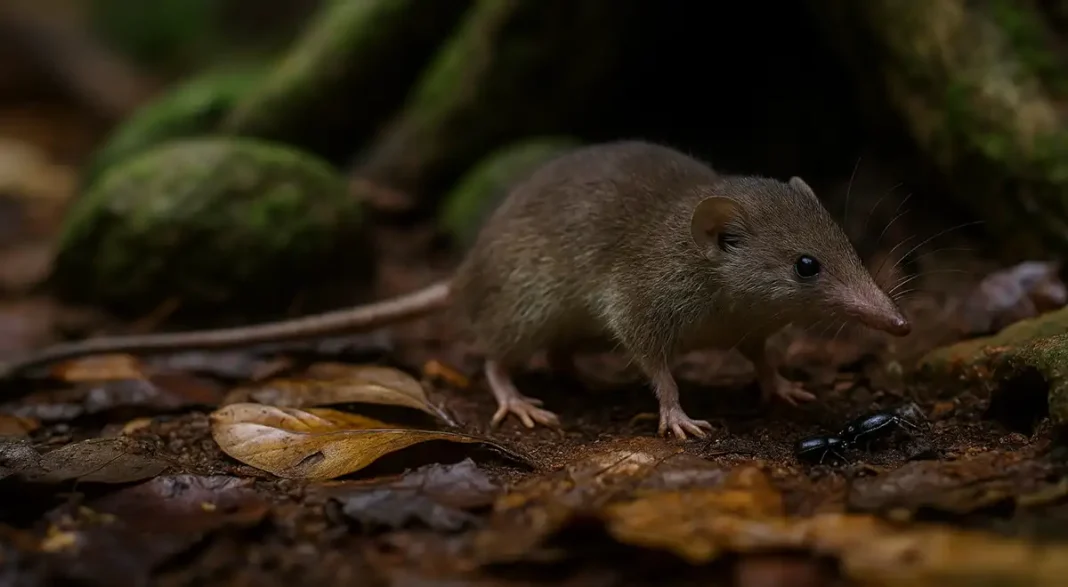News in brief — 10 October 2025
- The International Union for Conservation of Nature (IUCN) has officially declared the Christmas Island shrew (Crocidura trichura) extinct, in a Red List update released at the IUCN World Conservation Congress in Abu Dhabi. IUCN World Conservation Congress
- Last confirmed records of the species were in 1985 (only four records since 1900), underscoring a long, quiet decline. CSIRO Publishing
- The listing raises Australia’s known mammal extinctions since 1788 to 39, according to analysis accompanying the announcement. The Independent+1
Epitaph for the Christmas Island Shrew
Small whiskered pilgrim,
keeper of beetle-lanterns,
you read the rainforest by touch—
root and rock, leaf and loam—
a heartbeat threading the dark.
You asked for little:
a cool crevice, a damp morning,
the choir of insects to harvest and hush.
We answered with absence—
a silence that spreads like rust.
Go softly now, little one.
In the soil’s old library
your name is a marginal note—
smudged, but still legible
to those who kneel to read.
Sleep where the red crabs once marched,
beneath strangler figs and falling rain.
We did not count you in time.
We will carry you instead—
as a vow we owe the living.
By Kevin Parker
Contextual background
Christmas Island, part of Australia, a speck of rainforest rising from the Indian Ocean, is famed for its scarlet tides of migrating land crabs and for an extraordinary density of endemic life—species found nowhere else. Among its least conspicuous residents was a tiny shrew: fine-haired, sharp-nosed, with a tail longer than most of its kin. It foraged in the leaf litter and among buttress roots, nosing for beetles and other invertebrates, slipping into rock holes and root crevices at the edge of sight. It was the kind of creature you notice only when you pause and let the forest speak first.
Like many island endemics, the shrew’s world was small and exquisitely tuned. That tight fit made it vulnerable. Over the last century, Christmas Island’s biota has been battered by a suite of pressures: habitat disturbance from mining and settlement, predation and competition from introduced species (especially rats and cats), and ecological upheavals triggered by invasive insects—most infamously the yellow crazy ant—whose supercolonies have transformed forest dynamics and cascaded harm through the food web. On islands, such pressures don’t just add up; they amplify each other. For a creature that lived close to the ground and relied on rich, stable invertebrate communities, those changes were existential.
For decades, the shrew slipped from record into rumor. Surveys failed to find it. Hope narrowed, then became mostly ceremonial—the kind of hope biologists carry as a professional ethic. Its recent formal listing as extinct does not so much end a story as acknowledge the quiet way we can lose a thread until an entire tapestry thins. Extinction is not a single moment; it is a long unravelling that we too often notice only when the last fibre parts.
What remains is obligation. Christmas Island still shelters other irreplaceable lives—its flying-fox, hawk-owl, white-eye, emerald doves, geckos, skinks, and the crabs that aerate its soils. The shrew’s epitaph should therefore read like a work plan: stronger biosecurity to keep new invaders out; relentless control of established pests; sustained funding for on-the-ground monitoring (because you cannot save what you do not routinely see); protection and restoration of intact rainforest; and the humility to treat “small” species as large responsibilities. We also owe it our stories—teaching our children that a forest is made as much by the whisker-thin lives as by the towering trees.
If you ever walk there in rain, pause by a tangle of roots and listen. The forest carries memory in its damp. What we call gone, it sometimes calls by name.
